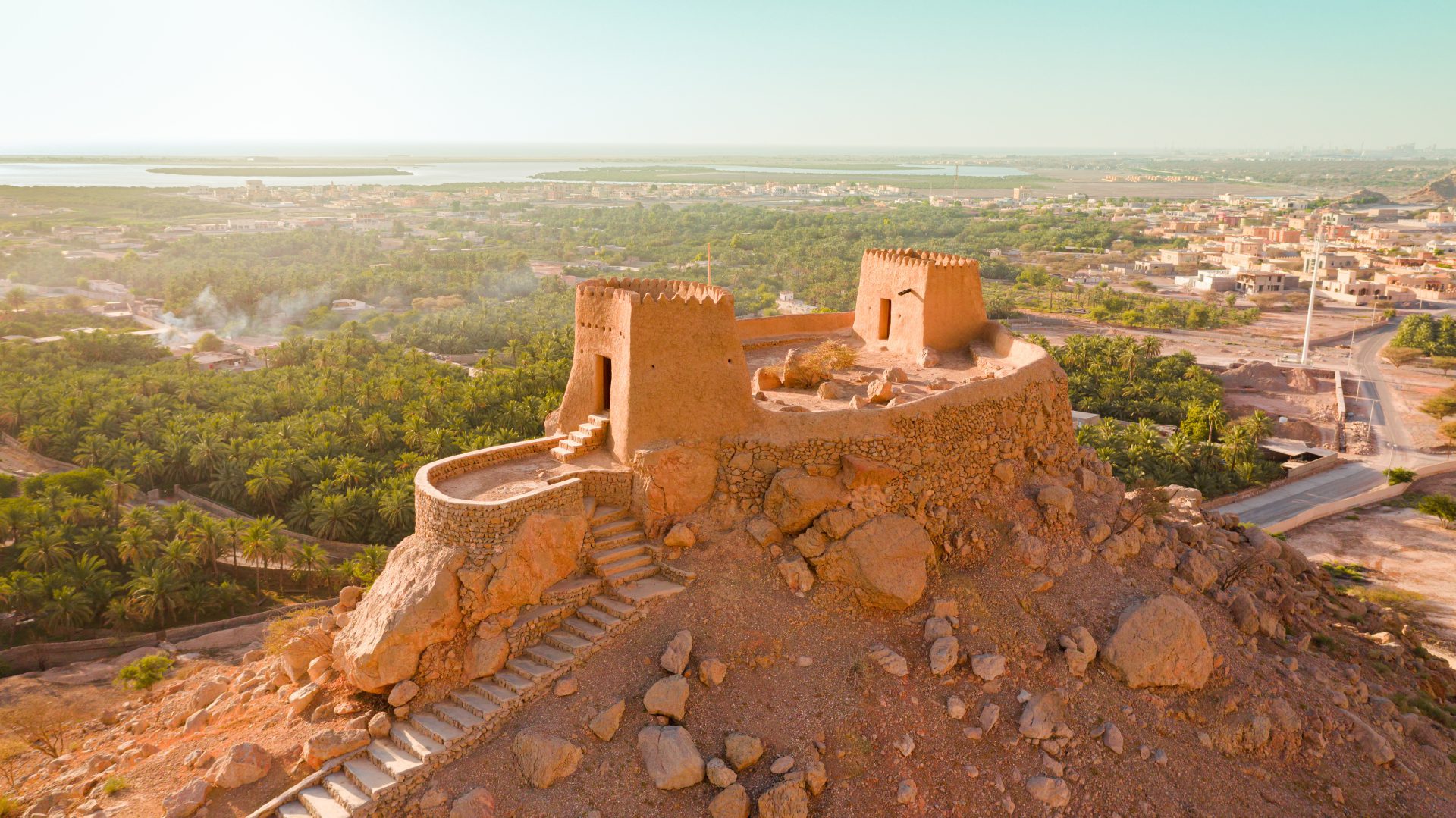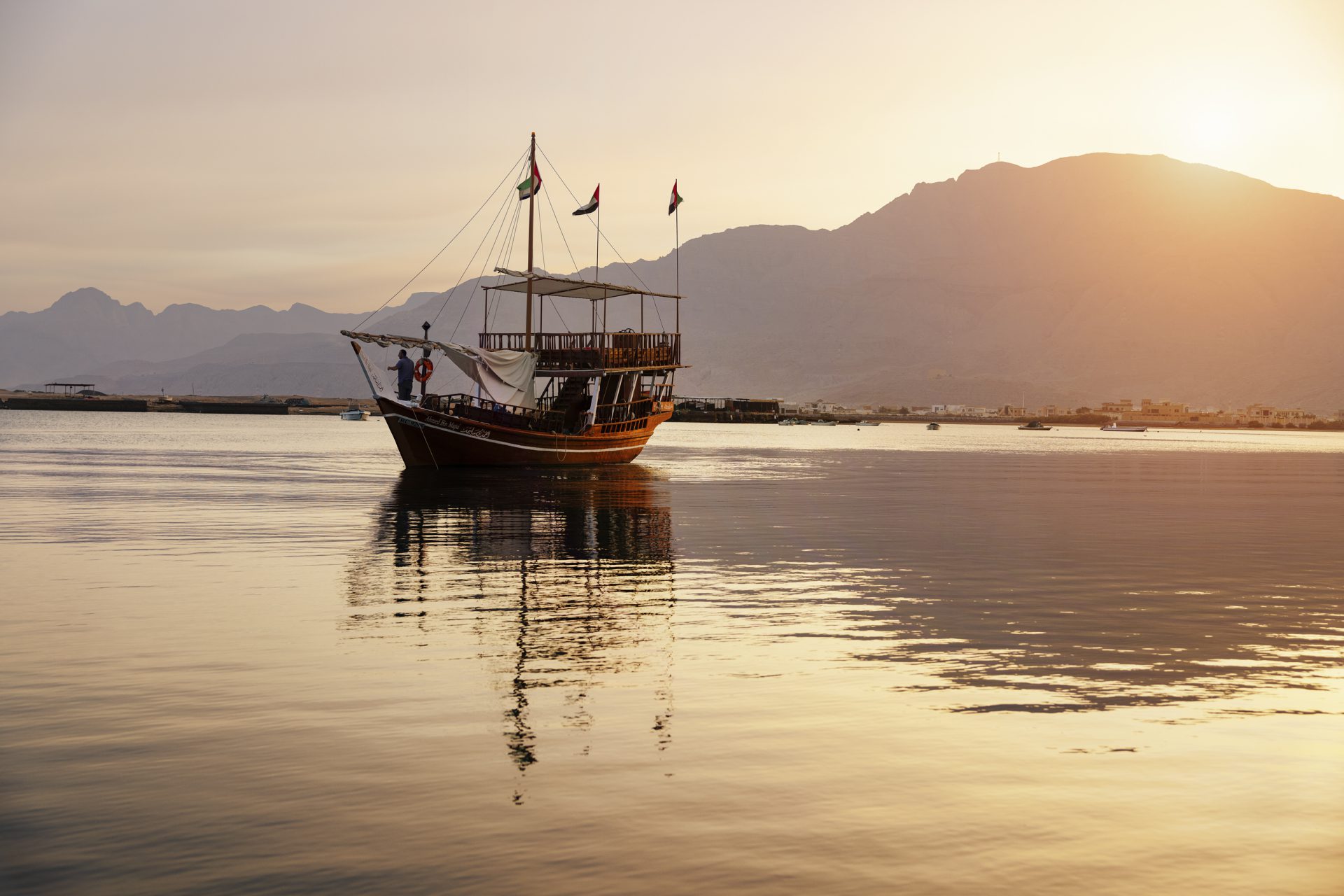HISTORY
Ras Al Khaimah takes visitors on a journey of discovery. Delve into the rich tapestry of 7,000 years of history and discover mountains, ancient forts, ruins, and age-old date farms.
Ras Al Khaimah is considered one of the most diverse Emirates offering world-class experiences and attractions, which has enabled it to assert its position on the Global tourism map as the fastest growing destination in the region.
At the fifth annual meeting of Tourism Ministers of the Gulf Cooperation Council in 2021, Ras Al Khaimah was named the Gulf Tourism Capital for the second consecutive year. It was also the first city and Emirate in the world to receive both the prestigious ‘Safeguard Assurance’ Label from Bureau Veritas, a leader in testing and inspection services and the World Travel and Tourism Council (WTTC) Safe Travels Stamp.


His Highness Sheikh Saud bin Saqr Al Qasimi was named Supreme Council Member and Ruler of Ras Al Khaimah on October 27, 2010. Sheikh Saud's rule has meant a continuation of the pro-growth policies that resulted in a per capita GDP increase of more than 50% from 2004-2007.
Emiratis are proud of their heritage and show extraordinary hospitality, family cohesion, tolerance and solidarity towards each other and their visitors. The Ras Al Khaimah Government and Tourism Development Authority preserve the heritage of its people. It ensures the rich history is not lost by bringing customary events and festivals, museums, landmarks, mosques, and tentative UNESCO areas of interest to visitors.
Camels have been at the centre of life in the UAE for centuries and played essential roles in transportation, food and entertainment. They symbolise Emirati cultural heritage and remain intrinsic to the country's traditions and cultural practices.
The Arabian Gulf has always played an integral part in Emirati culture; pearl fishing has always been revered as one of the UAE's treasured traditions. The Suwaidi Pearl Farm in Al Rams introduces the history of traditional pearl fishing techniques and the importance of the surrounding shallow bays and protective mangroves.
Ecologically diverse mangroves verdantly meander along the coastline of the Emirate. They are home to varied birdlife, including the pinkest flamingoes and the booted warbler. The Arabian Gulf provides solace for over 700 fish species, most of which live in rocky reefs.
The Emirate successfully appears in the Guinness Book of Records multiple times for its world record achievements, including the longest chain of fireworks, the longest firework waterfall and the most crewless aerial vehicles for launching fireworks.
The Emirate also boasts Jais Flight, the longest zipline globally at 2,83km, allowing thrill-seekers to soar from the highest mountain in the United Arab Emirates. The ride lasts for approximately three minutes and reaches speeds of 150 kmph.
The Emirate has tentative UNESCO World Heritage sites, including Dhayah Fort and Jazirah Al Hamra. Dhayah Fort is the only hilltop fort that remains in the United Arab Emirates, dating back to the Late Bronze Age (1600 – 1300 BC), when locals used it for settlement and fortification. Al Jazirah Al Hamra is the only remaining historical pearling village in the entire Gulf region. It represents thousands of years of classic social strata architecture and town planning in the Middle East.
